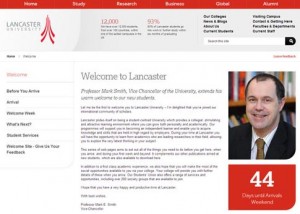Two completely opposite experiences with “gov tech” led to this post. The first was a catastrophe so vivid that it illustrates every mistake an entity could make in public. And the second was a nice surprise.
Let’s start with the story of how an online system set up by an American state crashed and burned in less than a minute—in the process, outraging hundreds of thousands of citizens. Seriously. Here’s a quote from the most recent excuse letter sent out by the errant agency: “The program experienced more than 38 million Web hits, and nearly 39,000 rebate reservations were made both through the Web site as well as the phone system. “
Do the math!! Even assuming that half the reservations were made by 18,000 people who spent up to four hours to get through on the phone (1,000 calls a minute, says the letter), and assuming that every web visitor tried 20 times to hit the site . . . that would mean 900,000 people were trying to get through on the website to make one of 18,000 available reservations. So two-tenths of one percent of the web applicants were successful. (Even if everyone tried 100 times—well, you see the gist of it.)
So why is this worthy of a post? I’ll content myself with proposing three takeaways:
- Realistic planning is vital to all online endeavors. In this case the problem was humongous numbers, but that shouldn’t have been a big surprise. In fact, it turned out later that the program had been outsourced to a company that encountered exactly the same problems in other states. So—how did these people (on both sides of the contract) end up so completely bumfuzzled?
- When something goes radically wrong, don’t make excuses. Do not talk about the problem in the abstract: “X happened because Y.” Go straight to “We failed and we are abjectly apologetic.” How is it that no one ever learns this lesson?
- Do not tweet hysterically in a crisis. As the web mob became increasingly frustrated, they tried getting news from the program’s Twitterstream. Here’s what the tweeter(s) were saying: “We are experiencing unprecedented demand. Please keep trying.” Which adds . . .
Insult to injury. In the first place, “trying” was irrelevant—the site wasn’t responding at all. (No one can figure out, by the way, how any online people could have gotten reservations.) And in the second place, encouraging people to keep hitting the site only made matters worse.
If you are wondering why there was no queueing system, join the club.
Meanwhile, for what it’s worth—just boil those three points down to Prevent, Repent, and Think Before You Tweet, and you can apply them to just about any situation, large or small.
Now for the nice surprise. I heard somewhere that the Health and Human Services (HHS) department of the U.S. government wanted to leverage “the wisdom of crowds.” (In case you’ve forgotten already, that’s the notion—popularized by James Surowiecki’s 2004 book–that aggregating the opinions of many will often produce better decisions than following the careful thought of a few.) Intrigued, I visited their website to see how this desire would be implemented.
It isn’t, actually. The site is mainly about how to use blogs and social media. But the reward for visiting is a very nice set of “guidelines” for the business use of social media tools. Free for the taking, so stop by!
(Yes—that is a hyperbolic spiral.)
Cynthia Giles has followed a serpentine career path from academia to publishing to marketing and design to information technology and corporate communications. There’s plenty of detail about this journey at www.cynthiagiles.com, but briefly--the common theme has been ideas, and how to present them effectively. Along the way, she became an accidental expert on data warehousing and business intelligence, and for the past ten years she has combined corporate contracting with an independent consulting practice that focuses on marketing strategy for smaller businesses and non-profits.
Having spent quite a bit of time looking for work, and anywhere from two weeks to two years inside a wide variety of American companies—she has given much thought to what works (and what doesn’t) when it comes to creating a great employment fit.



